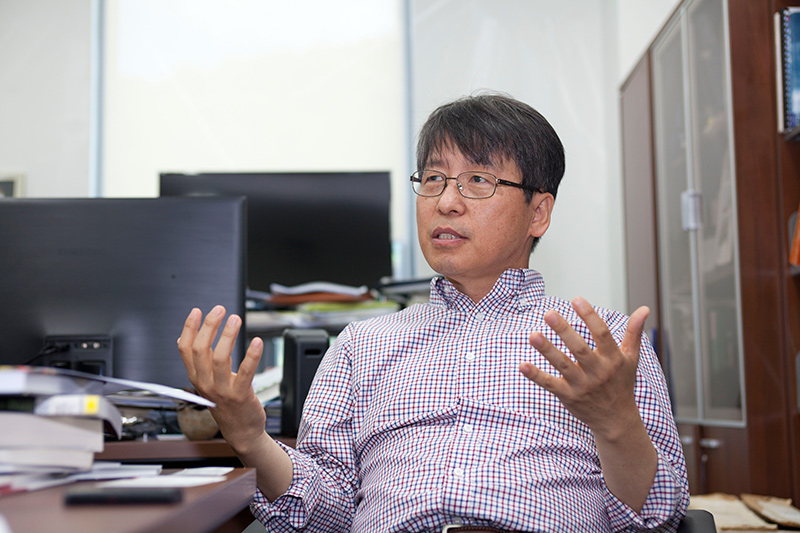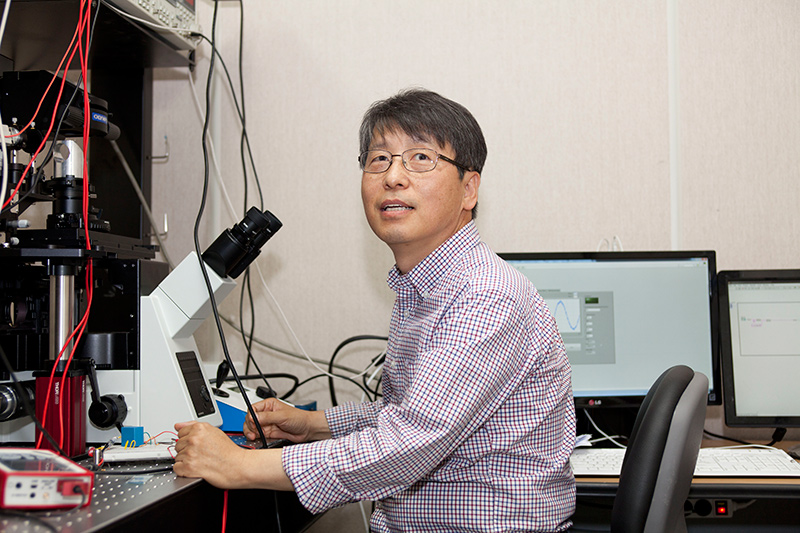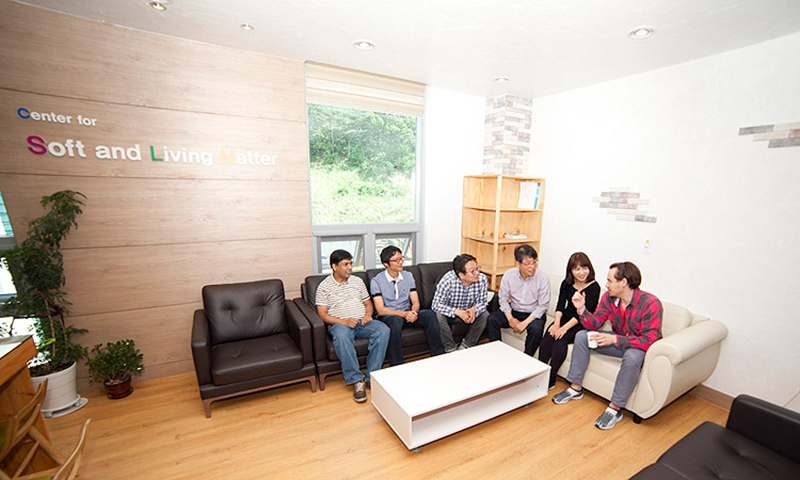주메뉴
- About IBS 연구원소개
-
Research Centers
연구단소개
- Research Outcomes
- Mathematics
- Physics
- Center for Theoretical Physics of the Universe(Particle Theory and Cosmology Group)
- Center for Theoretical Physics of the Universe(Cosmology, Gravity and Astroparticle Physics Group)
- Center for Exotic Nuclear Studies
- Center for Artificial Low Dimensional Electronic Systems
- Center for Underground Physics
- Center for Axion and Precision Physics Research
- Center for Theoretical Physics of Complex Systems
- Center for Quantum Nanoscience
- Center for Van der Waals Quantum Solids
- Chemistry
- Life Sciences
- Earth Science
- Interdisciplinary
- Institutes
- Korea Virus Research Institute
- News Center 뉴스 센터
- Career 인재초빙
- Living in Korea IBS School-UST
- IBS School 윤리경영


주메뉴
- About IBS
-
Research Centers
- Research Outcomes
- Mathematics
- Physics
- Center for Theoretical Physics of the Universe(Particle Theory and Cosmology Group)
- Center for Theoretical Physics of the Universe(Cosmology, Gravity and Astroparticle Physics Group)
- Center for Exotic Nuclear Studies
- Center for Artificial Low Dimensional Electronic Systems
- Center for Underground Physics
- Center for Axion and Precision Physics Research
- Center for Theoretical Physics of Complex Systems
- Center for Quantum Nanoscience
- Center for Van der Waals Quantum Solids
- Chemistry
- Life Sciences
- Earth Science
- Interdisciplinary
- Institutes
- Korea Virus Research Institute
- News Center
- Career
- Living in Korea
- IBS School
News Center
| Title | "I'm a Soft Matter Specialist" | ||||
|---|---|---|---|---|---|
| Name | Department of Communications | Registration Date | 2016-05-25 | Hits | 3411 |
| att. |
 thumb.jpg
thumb.jpg
|
||||
"I'm a Soft Matter Specialist"- Dr. PAK Hyuk-Kyu, Research Fellow of the IBS Center for Soft and Living Matter & UNIST Physics Professor - Interview PreviewQ: What is "Soft Matter"? A: As we can guess from the term, it literally means soft matters. They include liquid crystals, polymers, liquids, colloids and most biological materials. In soft materials, the binding energy is usually comparable to the thermal energy so they are highly sensitive to external stimuli. The term "Soft Matter" was widely accepted only after Pierre-Gilles de Gennes, a French physicist, used it in his 1991 Nobel Physics Prize speech. He won the prize for his studies involving liquid crystals and polymers. Q: Your work has been published in the New York Times. A: The newspaper devoted nearly a full page of its science section to our research under the title, "Hidden in the Hopper: A Secret of Physics" in 2001. I was serving as an associate professor at the Pusan National University (PNU). In the study I, and two other colleagues, explained the reason for a sudden collapse of a grain silo which caused serious damage in the U.S. Using experiments, we discovered that when granular materials like rice pass through an opening, they do not flow smoothly like fluids and their internal pressure distribution is also different from that of fluids. We reported a simple theory that explains the aforementioned phenomena in the journal Physical Review Letters and our study was the first to shed light on such phenomena. Q: Could you introduce the IBS Center for Soft and Living Matter (CSLM)? A: The Center, led by Steve GRANICK, a world-renowned polymer physicist, has about 80 members including students and staffs. Among 39 research fellows, 25 are foreigners. In a free environment, we conduct research on a variety of soft materials.
"The term 'Soft Matter' started to be widely used from the early 1990s and research in this field is flourishing in the U.S., Japan and Europe." At the CSLM, Pak assists Director Granick in managing research topics and administrative work, as well as helps foreign researchers adapt to a new environment. He also leads the Soft Matter Physics Research Team to develop nanoscale engines and to study interfaces between solids and liquids. The New York Times covering his workPak has a long relationship with soft materials. He earned a Ph.D. in physics from the University of Pittsburgh with his research on turbulence in the energy transfer where large-scale eddies, which contain most of the kinetic energy, split into smaller ones until the eddies become so small that their kinetic energy is converted to the thermal energy.
When he was at Duke University, his research was published in the journal Nature. It is possible to change properties of grain and powder by floating them using gas or wind and coating their particle surface. His study showed that vibrating granular materials with a force stronger than gravity can produce the same result. After returning to Korea in 1995, Pak studied soft materials through optical methods and performed thermodynamic experiments, serving as a professor at PNU. In 2001, Pak and two colleagues published a paper on silo jamming in the journal Physical Review Letter and the New York Times covered the research. He also drew attention in 2013 by developing a method to generate electricity using water droplets. His team succeeded in generating electrical power by mechanically modulating the shape of distilled-water droplets for the first time in the world and coming up with a supporting theory. At the lab, the team was able to light up 6 LED lights with only 1g of distilled-water. The outcomes were published in the journal Nature Communications and now many scientists refer to this research for energy harvesting. Stimulating global interdisciplinary researchPak is an experimental physicist but he also is interested in theoretical physics. Free energy, which determines thermodynamic properties of materials, is not calculable in non-equilibrium processes such as chemical reactions. However, with his experiment, he has proved the theory that free energy change can be calculated by observing and analyzing fluctuations in physical quantities and published the results in Physical Review Letters. That explains how he became the first experimental physicist who served as chair of the Thermal & Statistical Physics Division of the Korean Physical Society for two years even though most of the division members are theoretical physicists. Pak had been a physics professor at PNU for 19 years before he moved to UNIST and joined the CSLM within IBS in August 2014. He said, "The opportunity offered by the Center was very timely as I was feeling the need for change. IBS certainly provides a wonderful research environment but what's special about UNIST is that it differentiates itself from existing universities and colleges with its creative systems and passion." UNIST boasts of active interdisciplinary research by lowering barriers between different disciplines. Also, it is attractive for foreign researchers because all academic courses are conducted in English and most of faculty members are young and passionate. These merits can also be found at the CSLM. Dr. Bartosz GRZYBOWSKIi, Tsvi TLUSTY and other foreign researchers who have studied diverse fields are serving as group leaders. And it is easy to see researchers from various disciplines, including biology, physics and chemistry, passionately discussing their research at the lounge designed by Pak. Recently, his team focuses on developing a 100nm engine and studying the charge distribution near the liquid-solid interfaces utilizing the method of electrical power generation by mechanically modulating liquids. Developing a nanoscale engine starts from an experiment to confine a colloidal particle in water in an optical trap, which was made through shooting ultra-fine laser lights. Colloidal particles continue their random motion in the optical trap, colliding with water molecules, but they cannot escape from the trap due to energy barriers. His group has succeeded in driving colloidal particles to a certain direction by delicately adjusting the position of the laser. This experiment can prove "Maxwell's Demon"* – a thought experiment designed to question the possibility of violating the Second Law of Thermodynamics and is expected to provide a basis for the development of technologies that can maximize energy efficiency in nanoscale systems. * "Maxwell's Demon" is an imaginary creature that the scientist James Clerk Maxwell conceived to contradict the Second Law of Thermodynamics, which states: The entropy of an isolated system never decreases over time. Let's suppose a small door which divides two adjoining rooms, A and B, of different temperatures. If the door is kept open, fast-moving hot molecules get mixed up with slow-moving cold molecules and in the end, A and B reach the same final temperature. But if a demon, who can see individual molecules, guards the door, it can selectively open and close the door to allow only swifter molecules to pass from B to A and slower ones to pass from A to B. After a while, A will be filled with fast molecules, while B is left with the slow ones. Consequently, the demon will raise the temperature of A and lower that of B, without the expenditure of work, in violation of the Second Law.
Pak concluded the interview saying, "I hope the CSLM becomes a globally-recognized research center in the field of soft materials. And my personal goal is that my research on fluctuations in nanoscale systems can contribute to a better understanding of the Second Law of Thermodynamics, which describes a non-equilibrium system - a system whose equilibrium is broken by external inputs. In addition, I would like come up with a new research method for solid-liquid interfaces." Pak is now busy preparing for the IBS Soft Matter Summer School, an important event in the field even supported by the US National Science Foundation. Marking its fourth anniversary this year, this event will be held from July 4 to 14 at the CSLM in UNIST. The Summer School invites 10 world-famous scientists to deliver a lecture and serves as a forum for their lively discussions with 70-80 young researchers.
|
|||||
| Next | |
|---|---|
| before |
- Content Manager
- Public Relations Team : Suh, William Insang 042-878-8137
- Last Update 2023-11-28 14:20














